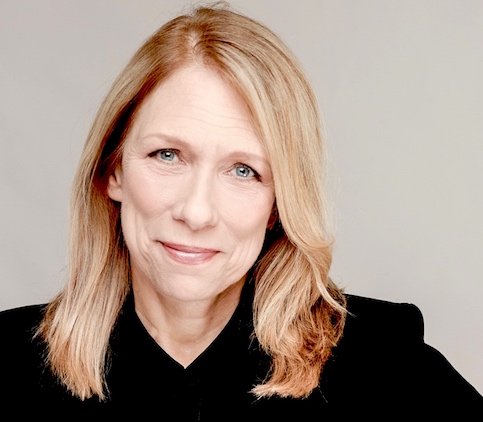“Donnelly’s cartoons are the best kind of funny—sly, smart, and right on the money. [They] are great social commentary as well as great fun.” Susan Orlean,
You started drawing from a very young age thanks to your mother. How did that lead to a career as a cartoonist. Why did you choose the medium of cartoons?
Laughter was something that was easily acceptable in our home during my growing up years. I found it was a way to make my mother laugh. It all started from a desire to please her and make her happy. My father was working; he was a physician. My sister was somewhat rebellious, always getting into trouble and causing my parents some problems and headaches. So I thought it was my job as the younger, quiet daughter to make my mom happy.
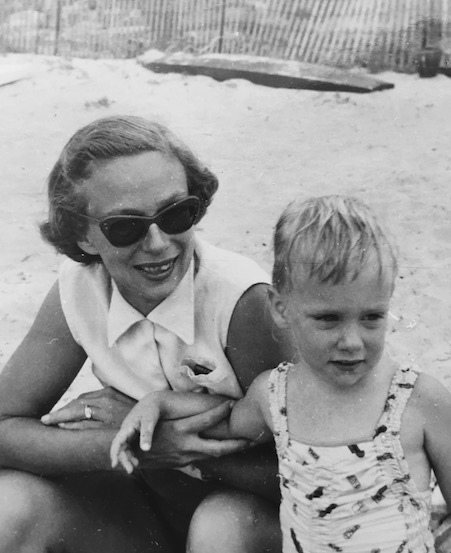
With my mom
Soon I found using cartoons was a way to communicate with my friends and show them things that I was observing. I was very shy and didn’t talk much. I would spend time alone with my drawing pads. Cartoons became a way for me to talk. Then later when I was growing up in Washington D.C. during Watergate I witnessed the Civil Rights protests and feminist movements and lots of turmoil. I was trying to figure things out. I drew cartoons about the world around me.
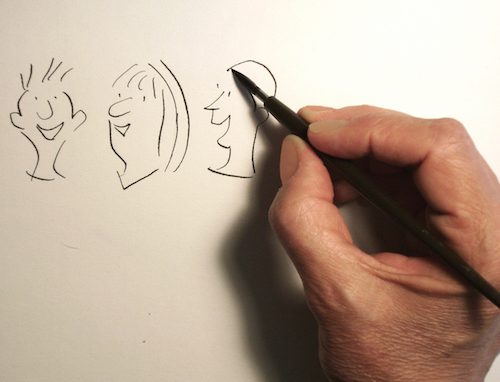
Hand Drawing
When I grew older I decided to become a political cartoonist to help contribute to something. I was shy and didn’t think of myself as activist in the classical sense. I wasn’t going to go behind the picket lines. There were political cartoonists out there, I had this skill, so maybe I could do that. While I tried my hand at it, I felt like I didn’t have enough opinions (which wasn’t the case). I just didn’t know how to access the opinions. In my mind, strong opinions were other people’s job, particularly men. Women back then and still to this day (to a lesser degree) are not the ones to offer up opinions.
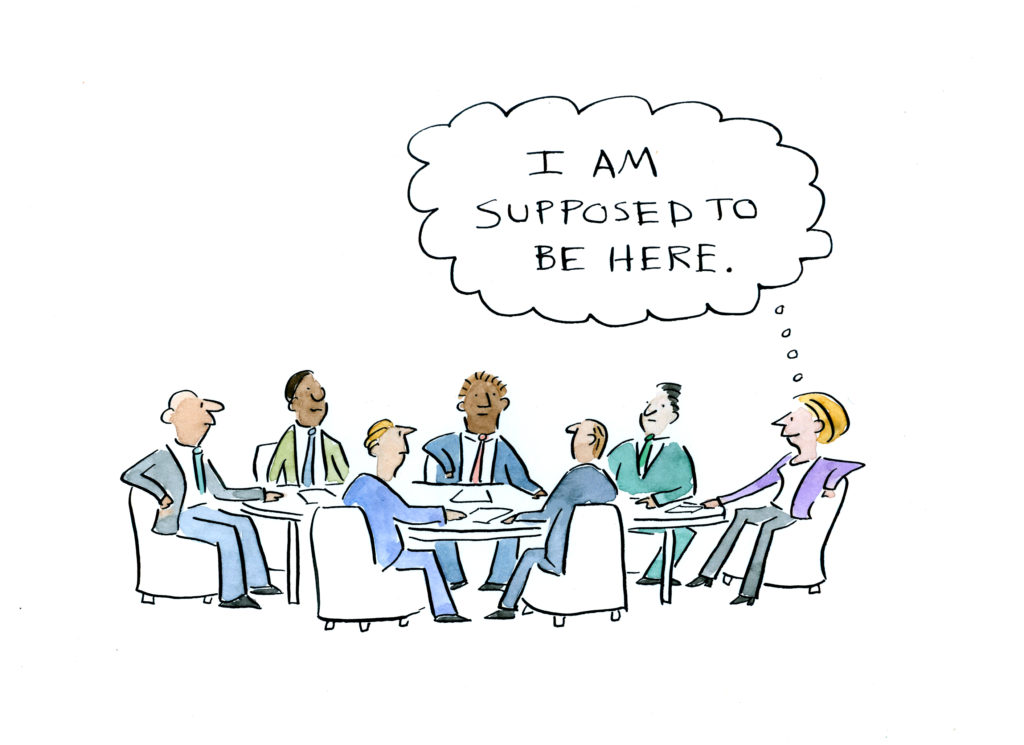
Someone recently responded to my Donald Trump cartoon saying they’re so happy that I can do something in cartoon that they are thinking about but can’t put into words. While an idea can be put into words, it might take a lot of words. You can say something quickly using cartoons.
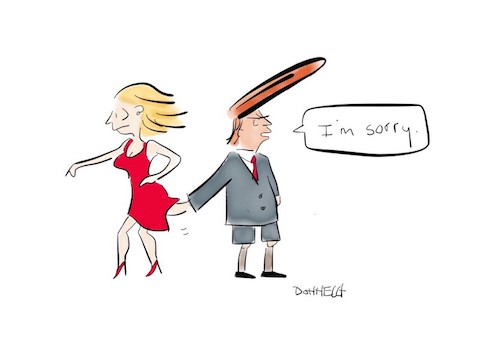
This is who Trump is
Does it help to be complacent to other’s opinions or does it offends others? Or is that the beauty of a cartoon, that it’s just a cartoon?
It’s complicated question. I still think I have to be careful because I don’t really want to offend anybody. That’s not what I’m looking to do. I like to make fun of people; politicians are fair game. I am perhaps a more careful cartoonist than some. I try to take others’ feelings into consideration even if they’re in public life. It just depends on the idea. I am probably a lot more careful than other cartoonists.
There are very few women cartoonists in the world. Do you have any role models? What/Who helped you break the glass ceiling?
I’m not the first, obviously. There were women cartoonists before me. In fact, in this country there were women cartoonists to help gain suffrage. I didn’t know any women cartoonists when I was growing up. I looked to cartoonists and people whose style I liked and could emulate. When I wanted to be a professional after college, there still weren’t any women. There were a few I knew of but I had not seen their work. There were just a handful. Nicole Hollander, Claire Bretécher who’s French. While The New Yorker had a few women in the beginning parts of the magazine that I was sort of aware of I didn’t emulate their work. I just wanted to do my work and I just plowed ahead.
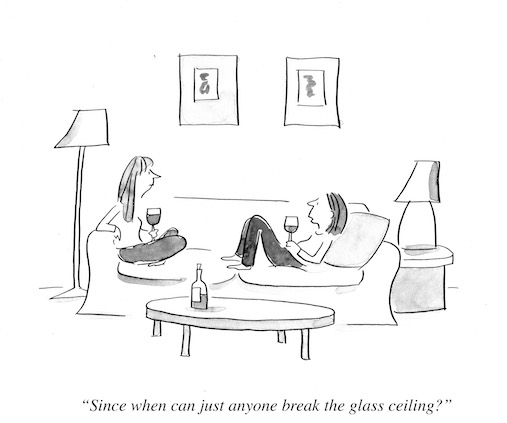
When I wrote my book “Funny Ladies”, I found out that there were women cartoonists at The New Yorker in the 20s. They disappeared in the middle of the century and came back in the 70s. The reason we were brought back in, the three of us, myself, Roz Chast and Nurit Karlin was because the new art editor was looking for different kinds of voices. Different ways to express humour. Once you open the door to different ways to do something, you often get more diversity. He wasn’t looking for women, but he was looking for new ways to create humor and he found us. Our styles were different. I was 24 when I sold my first cartoon to a magazine. It was thrilling.
My parents were encouraging, my college was encouraging and my art teachers were encouraging. My art advisor in college was a male, there were no women. I had a passion for something and I just kept doing it. I felt no barriers when I was young even though I am sure they were there. One of the things that I managed to have as a person was persistence and learn from my colleagues and from other people in the business to not take rejection to heart. You have to learn to cope with constant rejection.” You just keep drawing and you keep putting things out there and don’t take it personally. It’s very hard to stay true to your vision. But I really wanted to be a cartoonist and to help the world.
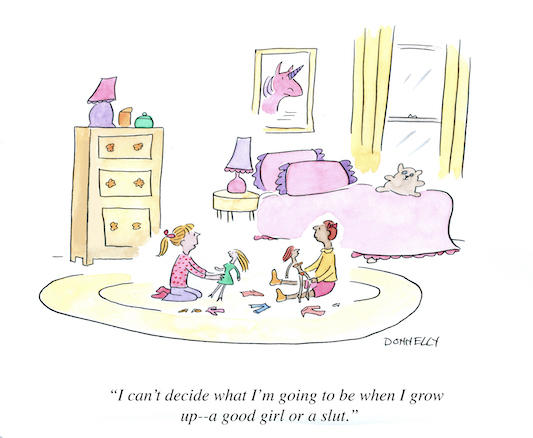
As I mentioned, I wanted to be a political cartoonist. But instead of being a hard hitting editorial cartoonist, in the classical sense dealing with politics or wars or leaders et al., in The New Yorker you could be political in a quieter way and in a more personal way. That’s how I found my voice. It actually works well with my work in women’s rights, because I think being a woman is a political act every day. So if you draw cartoons about what it is like to be a woman, you can get at those things that maybe aren’t as obvious to other people.
What challenges have you faced to get where you are today and how did you overcome them?
The media landscape is changing fast and it’s hard having to adjust to those changes. While online publishing is common, it doesn’t pay much. I have to find other ways to get paid. You have to, as a freelancer, constantly work those things out. I do speaking engagements and live drawings. There are live drawing events and conferences and I am tweeting them out. I’m providing live commentary and drawing, which people seem to like. I have been working with CBS for that and I have done it for The New Yorker.
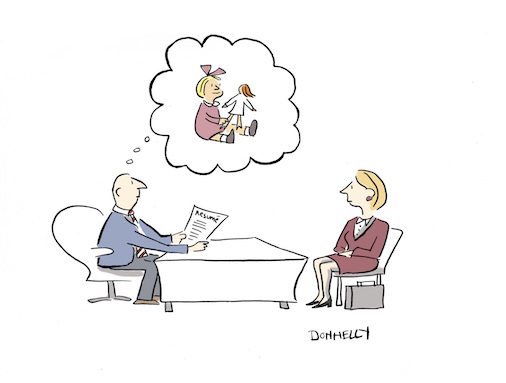
Man sexist towards a woman applicant
I don’t know if I am facing any challenges as a woman right now. At a certain age, you begin to realize that your role is different. I’m doing more interviews, offering advice to those who ask. I feel as a cartoonist and as an opinion journalist I have a lot to say. Since I am older, I have perspective that maybe somebody in their 30s might not have. I hope that my age doesn’t stop people from hiring me or asking me to contribute.
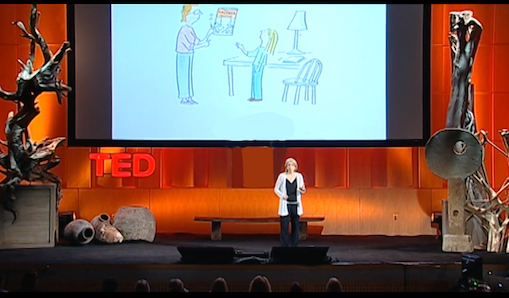
Liza speaking at TED
I’m using words more often. Not only was I shy when I was younger, but many of my early cartoons were caption-less. I was really suspicious of words and I didn’t know how to use them properly. But now I love words. I of course use them in my public speaking and I am writing a lot. I also am studying stand-up and improv to see how those can help me in my work and how it might extend for me what humor can be.
You are a strong feminist, what according to you is feminism? You make it a point every week to draw cartoons related to women’s rights, what brought about that shift?
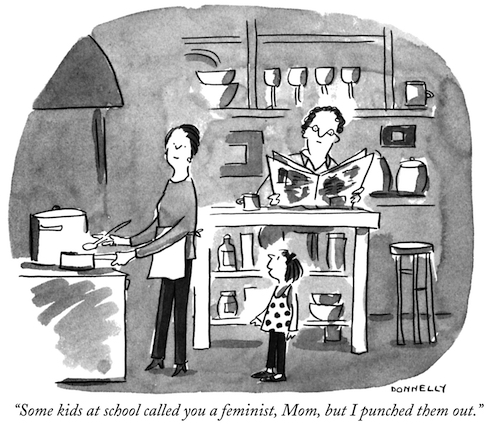
Feminism to me means equal rights. I’ve always been a feminist, but I began wanting to draw more about that subject and global issues about ten years ago.A variety of things brought about that shift. The 9/11 event shocked me. Right after the event I dedicated myself to doing more political cartoons. I spoke out more. I can’t think of one specific instance, but I began to want to draw more about women’s rights. In the 90s when I was drawing for The New Yorker, Tina Brown was the senior editor. She liked my work and bought a lot of it. I realized after the fact that I could create women being sarcastic and making fun of our spouses or boyfriends or life. So it was a voice that she helped foster in me, a humorous female voice. There were also things in the news that inspired me- more was being written and spoken about women’s rights, and then Hillary Clinton ran for president in 2008. I began to draw more cartoons about women’s rights. With international news coverage, I became more acutely aware of issues in other countries regarding women. So, I began to dedicate myself more to women’s rights and cartoons. And I found I could publish them routinely on the internet and twitter.
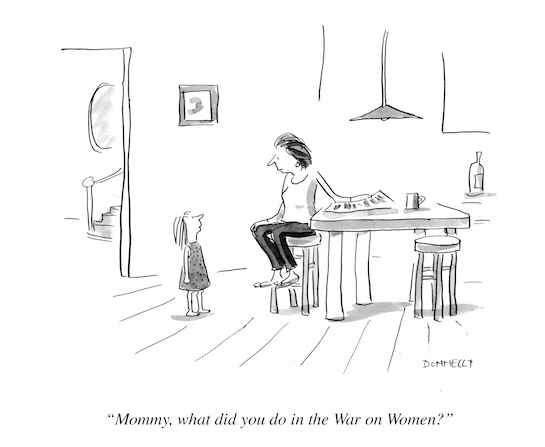
Did any of your cartoons ever backfire or become controversial? What happened? An example of a positive one that went viral and influenced many, maybe led to a revolution?
I do have critics, some people arguing with me or telling me that I’m wrong. I am sometimes the recipient of nasty words from trolls. They seem to be people who just want to throw expletives at you. Luckily I haven’t experienced any sexual harassment. Sometimes I will engage with people but it depends on how they are coming at me. If they are throwing expletives at me, then I will block them. I like Twitter and see it as a great place for dialogue.
I don’t think any of my cartoons started any movements but there was a cartoon I did that was on Twitter during the Arab spring, right at the cusp of that happening. It was two American women talking to each other. One says to the other, “Today I went from tweeting my oatmeal to tweeting revolution”. It’s fun when you do a cartoon and it rides the wave of what’s happening.
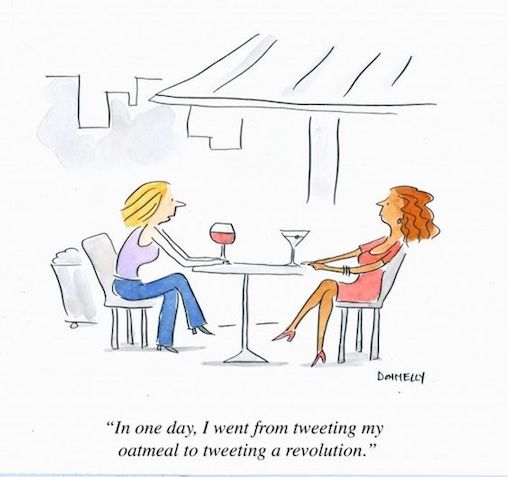
How do you pick your topic/subject everyday? Walk us through a day’s process, how many cartoons do you make in a day?
I don’t have a typical day anymore but I check the news first thing in the morning online. The New York Times, Washington Post, Twitter and sometimes I’ll put on CBS or CNN to see what’s going on. I get alerts on my email through various publications, so if there is breaking news I will get it right away. Right now, of course, I am focusing on the election in this country. I worked for Politico last year and focused on what was going on in the EU. I found it very interesting to do that for that period of time. We have to submit weekly to The New Yorker. I don’t always submit weekly because I have so many other cartoons that I’m working on but the cartoons I do submit to them are usually cartoons about daily life. They’re mostly non-political.
While my cartoons can come from anywhere, some do come from the news. In The New Yorker, we try to look for news items or trends or buzzwords that are going to be around for a while because it is a weekly magazine. You want to make sure it is understandable. Then there are cartoons that I do quickly or in the moment if there is something happening in the news, e.g. a political event like what’s happening with the election or the rape in India. I did something about that when it happened.
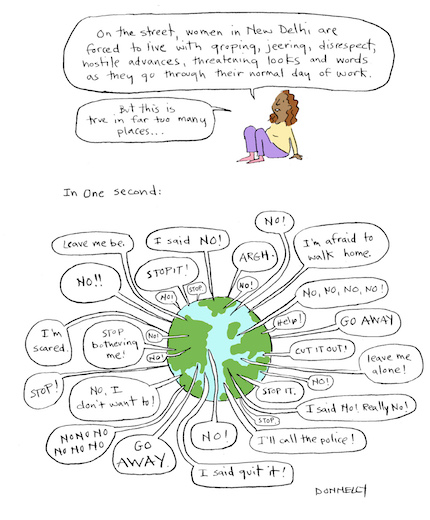
In one second
About a year ago, there was a bombing in Pakistan that killed children and families. I did a quick drawing of a child covered with a Pakistani flag and a woman bending over the flag weeping. I posted it very quickly and it got a huge amount of attention. People from Pakistan, I think, liked it because the U.S. media doesn’t always pay attention to the deaths over there. That touched me.
How I choose? It is kind of intuitive. There are some that I want to do, but there are also those cartoons where I think there is something that needs to be discussed. Sometimes when it’s a nuance subject, it takes some time to figure out what I want to say about that subject. When Trump said something about women in the military and rape, I really wanted to do something about that. It is a subject that we need to deal with. It is case-by-case how I treat the cartoon, some of them are serious and some of them are just silly reactive type of cartoons.
Can one successfully use cartoons for gender activism?
It would be too easy to get cynical saying, “It’s just a cartoon, it’s not going to change any minds.” And it probably won’t. But I don’t see any reason to not try. I feel fortunate enough to have this gift so why not use it for something that will bring about change! Most people love cartoons and if you can draw somebody into a cartoon just because they want to see what it says or they are looking for a laugh, show them something that they weren’t aware of before. It will maybe make them think.
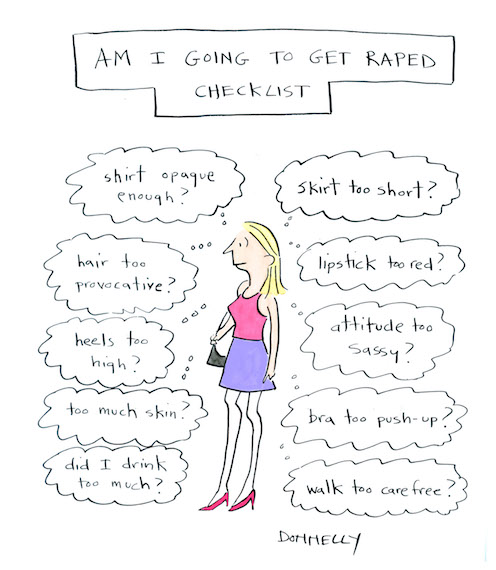
Am I going to get raped checklist
I’m not so confident that I will change anybody’s minds but maybe it will. We all have to try. We all have to do our part. Each individual has a responsibility to speak up about things that are going on that are wrong and cartoons can get at that beautifully in a quicker way. Cartoons can also speak to young people and inspire them to be an activist in their own way.
I taught women’s studies at Vassar College for four years. I would use cartoons in this class to open people’s eyes. These were mostly freshman who were reticent to embrace it fully but when they would look at a cartoon, they would recognize the situation. They would say, “Oh yeah, that happened to me. I just didn’t realize it or think about it. It was rewarding to hear that.
I published a couple of books on women and cartooning. It was after “Sex and Sensibility” came out, which was a collection of ten women drawing and writing about love and sex. I was in the office of The New Yorker not long after it was published and there were a couple of women there, which was unusual. One of the woman said to me, “I saw your book and thought maybe I could do that.” It was rewarding to hear that. Maybe I set an example.
What is next for you? Career wise, what would you like to achieve next?
CBS News hired me last week. I now work for them. I am still focusing on this election. If Hillary wins, I would like to focus on what it’s like to have a woman president in this country. Let’s hope the changes and reaction to the culture are not too negative.
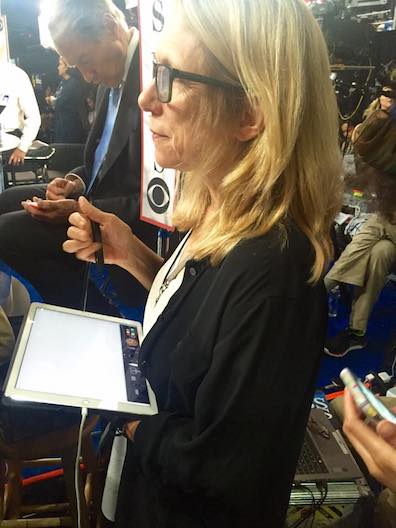
Liza live drawing at the Democratic National Convention
Recently another news outlet wanted to do a snapchat session of me live drawing the results of the New York primary in front of my television. Young people aren’t reading the news, they are looking at snapchat. They thought that maybe they could bring in some viewers using cartoons that are covering the elections. I love social media, I enjoy it. It’s fun for me to find out different ways to use these tools.
Sayfty’s mission is to Educate, Equip and Empower women so that they can protect themselves against violence. What’s your message to our readers related to women’s personal safety and the issue of violence against women?
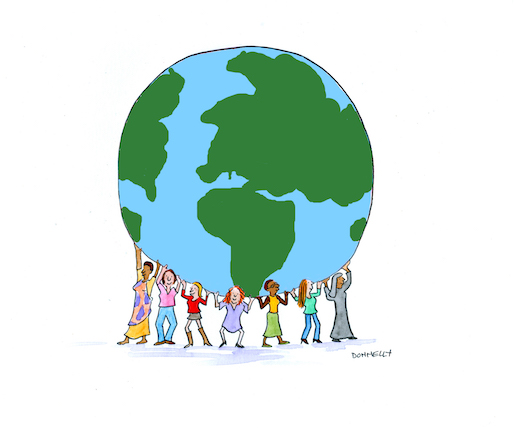
Women holding the globe
Personally, I am lucky to have not been a victim of violence, although I have been a victim of street harassment. I think it is important for young women to know that it’s not their fault whatever the harassment or abuse or violence. Don’t ever think it is your fault. Feel good about yourself and find support. Find other people that will make you feel good and help you find out who you are. What happened to you does not define you. That is not who you are. Be patient with yourself. If you are trying to find your voice or find out who you are, it can take some time. It took me time to find my voice, literally, but now that I have found it I can’t shut up. I was lucky to have the support of people around me. So find those people.
Brief Bio
Liza Donnelly is a writer and award-winning cartoonist with The New Yorker Magazine, where she has been drawing cartoons about culture and politics for over thirty years. She is also a resident cartoonist at CBS News, live drawing cartoons for CBS This Morning and special events. Liza wrote an Op-Ed for the New York Times about the Charlie Hebdo killings in France, and is a columnist and cartoonist for Forbes.com, specializing in politics and women’s rights. Donnelly draws political cartoons for Medium and Politico. Donnelly was a finalist for the 2014 Thurber Prize, the award for written humor in the United States, and is a Silver Reuben Award recipient. She collaborated with New York Times columnist Nicholas Kristoff, creating an original cartoon to appear in his Times newsletter and drawing sketches to promote the broadcast of the PBS program based on his book about global abuse of women.
Donnelly is a Cultural Envoy for the US State Department, traveling around the world speaking about freedom of speech, cartoons and women’s rights. Donnelly spoke at TED (Technology Entertainment and Design) about using humor to help women around the world, a talk that has since been translated into 38 languages and viewed over one million times. She also spoke at the United Nations, The New Yorker Festival, several TEDxes, colleges, universities, NGOs and corporate venues in the US and abroad. In 2014, Donnelly was the recipient of an honorary degree from University of Connecticut and delivered the Graduate School Commencement address.
Donnelly is the creator of a new digital visual reporting/editorial cartooning she calls live tweet-drawing. She covered the DNC, live, for CBS News in 2016. According to NBC News, Donnelly is “a pioneer of on-the-fly sketching of live events” wherein she quickly cartoons people and events on her tablet and immediately tweets them out, sometimes with humorous and insightful commentary on the drawing or in the tweet.
To learn more about Liza’s work, please visit her Website. You can also connect with her on Twitter.
